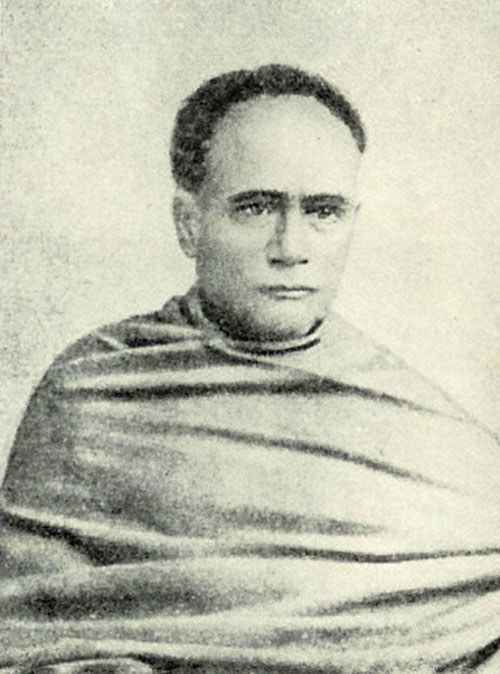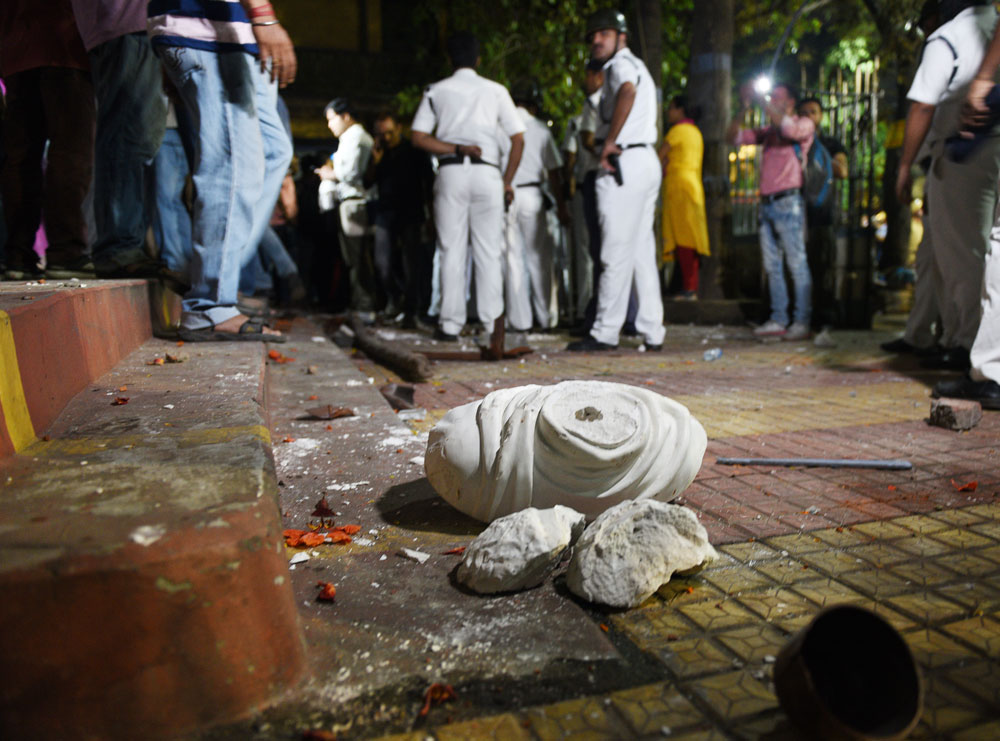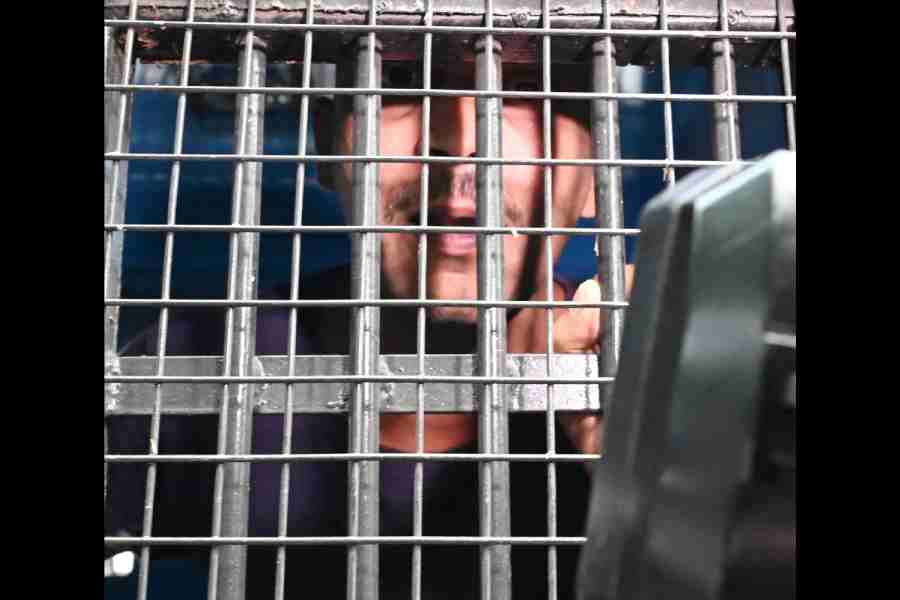Ishwarchandra Vidyasagar (September 26, 1820-July 29, 1891) has been in the news, with birthday celebrations underway in Bengal. Of course, renewed attention was directed at him first in the run up to the 2019 general elections. Almost anybody familiar with his campaign in the 19th century for Hindu widow remarriage before 1856 (even if they are ignorant of all his other achievements) would concede that being in the news was never unusual for him, for he was much talked of in his time. But why exactly is he being discussed in 2019, when he seems to have become symbolic of everything ‘we’ in Bengal stand for? Looking at the spate of activity in the last couple of weeks around his 200th birth-year celebrations, one cannot but be struck by the number of statues commissioned, garlands offered, functions organized, works published, editorials written and debates generated on what Vidyasagar stands for in the mind of the ordinary Bengali. At stake is nothing less than a politics of Bengali identity itself.
The image of Vidyasagar in our minds is of a cotton dhoti-chadar-clad Brahmin of prodigious learning: a man of the soil who achieved immortality. In the national imagination he is a symbol of the authentic: Bengali writer and educator, Sanskrit pandit. While we may be factually aware of his fight for the rights of women, and are dimly conscious of the progressiveness of his thinking, we nevertheless do not always confront the man, especially in the way that comes alive in a series of letters he received in Calcutta starting in 1864.
From France, Versailles,/ 12, Rue-des-Chantiers,/ 2nd June, 1864 (in the order he put it at the top right-hand corner of his letter), Michael Madhusudan Datta, Bengal’s greatest poet-in-exile, suddenly wrote for help to a man in Calcutta it seems he had not written to before. “My Dear Sir,” he began formally, “If you had been an ordinary man, I should begin this letter with a well-worded apology for not having written to you so long. But you know well that we never fly to a man in the hour of distress unless we regard that man as the truest and sincerest of our well-wishers and friends.”
This is the first of many letters to Ishwarchandra Vidyasagar from Michael, letters well-known to the Bengali reading public since they were first published, but perhaps not well-known enough. Written all in English, with a few lines and a sprinkling of words in Bengali in rare instances (and a couple of quotations from Bharatchandra), Michael, it seems, received replies from Vidyasagar also in English. Vidyasagar’s considerable corpus of English correspondence and official reports lies uncollected, as Indranath Chowdhury has written recently, not part of any of the Collected Volumes of his works. In a recent interview, Sankha Ghosh has recounted a story about the time he was working with a team of scholars at the Bangiya Sahitya Parishad, where Vidyasagar’s desk and bookcases were kept. A visiting university lecturer looking through the collection was surprised at the number of English books — “Did he know English?” he asked.
Some of the most fiercely independent-minded intellectuals of 19th-century Bengal were among the least hostile to English influences; Vidyasagar was one of them. Asked at an informal get-together to weigh the pros and cons of English colonization in Bengal, he had, with characteristic clever satire, replied: “On the whole, I feel that we have received three good things from the English.” First on the list was English literature. “The literature of Shakespeare, Milton, Bacon, Sir Walter Scott and others that we have got from them — do not underestimate their value,” he had said. He went on: “Second gain — ice. In the searing heat of summer, put one piece of ice in a tumbler of water, and your relief is immense.” Finally: “And the third is sliced bread... You laugh at what I say? But tell me, did we have anything comparable to sliced bread in our country before? Soak a slice of bread in a bowl of milk and have it, and you will be full, and you will also not fall ill” (My translation). The issue of sliced bread, however, was much more provocative than the humour here indicates. Produced in bakeries run by Christians or Muslims, this staple was forbidden in many Hindu households at the time.
A description of Vidyasagar’s Chandannagar drawing room a year or so before his death shows us how his tastes were unexpected. Jogendrakumar Chattopadhyay writes: “Entering the room, I was taken aback in wonder. Was this the sitting room of a Brahmin pundit or the drawing room of a European gentleman? A huge hall, surrounded on three sides by books arranged upon rows and rows of bookcases. All the books were beautifully bound and shining. Right at the centre, there was a big table surrounded by many chairs.” Equally aware of the merits of Western-style furniture and fittings as those of sliced bread, his attitude towards the Western-style toilet was somewhat more dismissive.
Meanwhile, many years before this scene, the poet he had done so much to support had died a tragic death in June 1873. Their correspondence is available to us one-sidedly, from Michael’s Collected Works alone. Even so, the extraordinary relationship comes alive across the pages, as the formal “My dear Sir” soon becomes “My dear Friend”, followed by the irrepressible and astonishing “My dear Vid”. Famously, here Michael christened Vidyasagar ‘Karunasagara’, and said about him to his wife to reassure her in her suffering: “…for the man to whom I have appealed, has the genius and wisdom of an ancient sage, the energy of an Englishman and the heart of a Bengali mother!” Railing against Calcutta society, he wrote to his ‘dear Friend’: “But though a Bengali, you are a man, and I believe you would risk anything to help a friend in such distress as I am!” He not only recognized the extraordinary character of his benefactor (“[you] go to work with that daring and energy which have made you more beloved, more honoured, more revered than thousands of millionaires!”), but had a sense of himself in relation to the him: “You and I — my good Vid — have often done desperate things, and looked to the chapter of accidents to neutralize the effects of our benevolent folly... And what has been the result? You are the greatest Bengali that ever lived and people speak of you with glowing hearts and tearful eyes, and even my worst enemies dare not say that I am a bad fellow!” When he ceases the litany of complaints, the expressions of despair, and the pleading, he is able to report sometimes on a good review of Vidyasagar’s work in the Saturday Review, or to recount: “I have seen one or two of your works in a shop in Paris. I told the shop-keeper ‘This author is a great friend of mine.’ ‘Ah Sir’ said he ‘we thought he was dead.’ ‘God forbid’ said I — ‘His country and his friends cannot spare him.’”
His country and his followers, it is self-evident, cannot spare him today either, when, more than ever before, he is necessary for all sorts of reasons to those who invoke him, his name, his deeds, and his memory to shore up against a set of iniquities very different from those of Madhusudan’s life and time. Yet we must be careful, when we turn to him now, to remember him in his unexpectedness: the absence of predictability that marked him, his short-lived friend, and their world, which made it so open to change and transformation.













